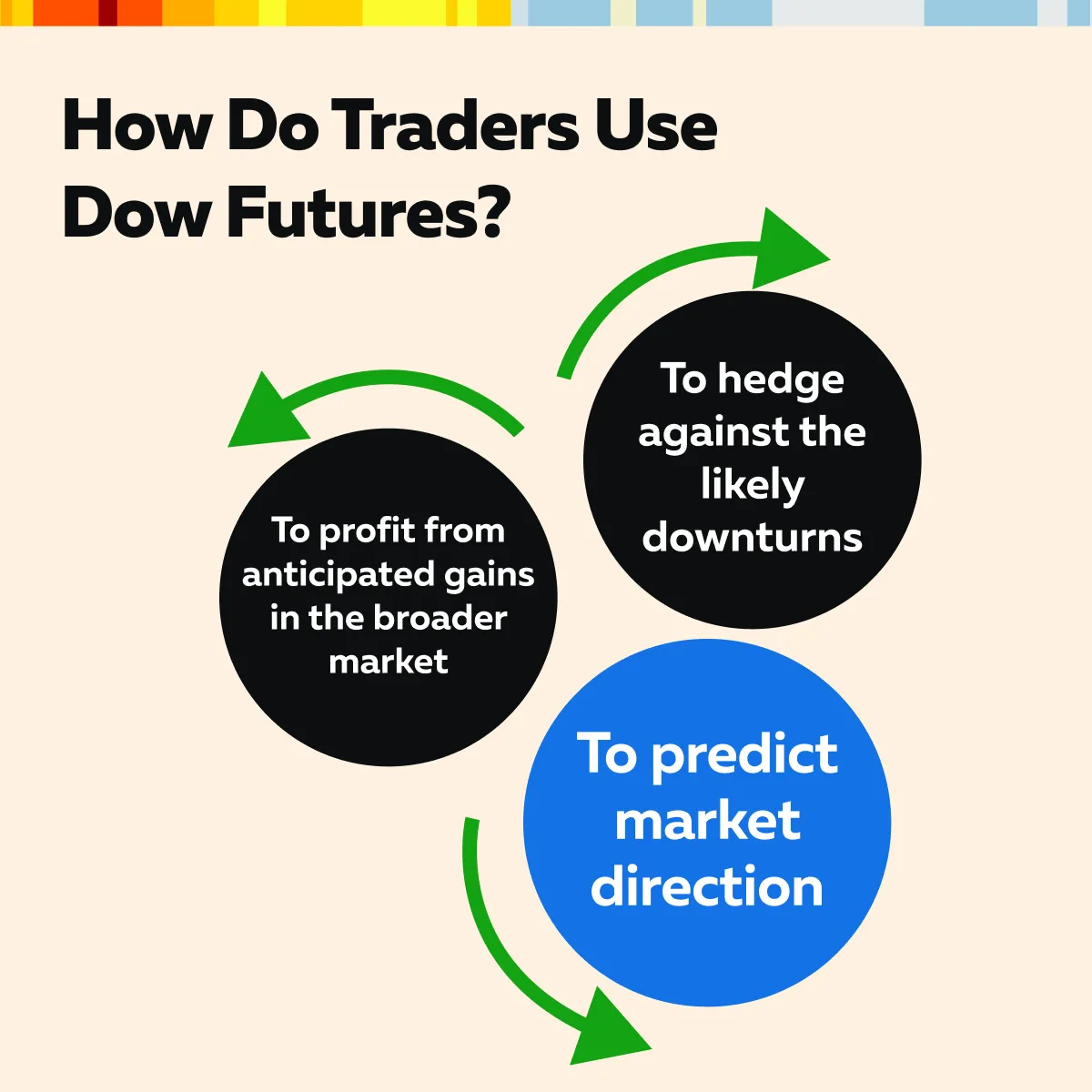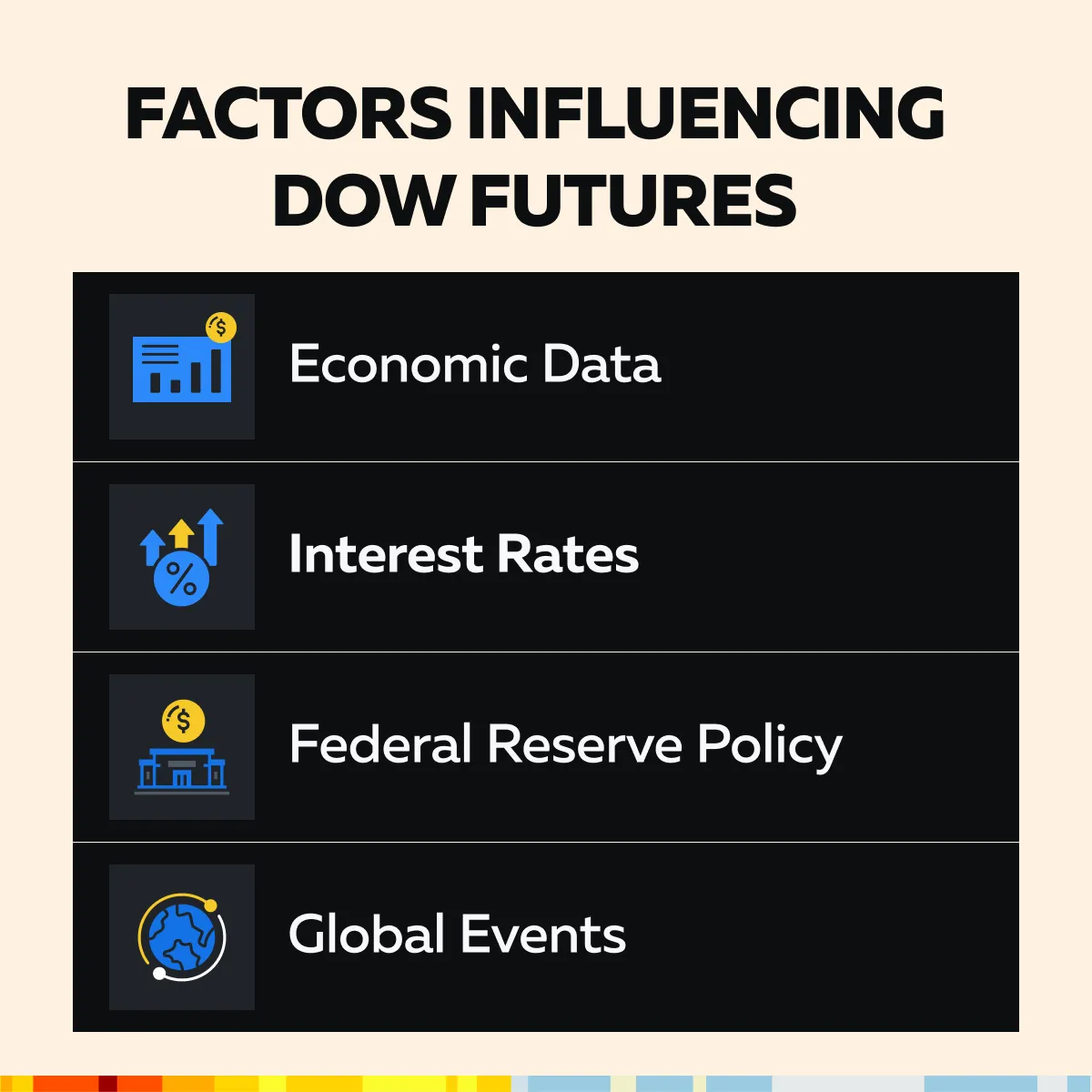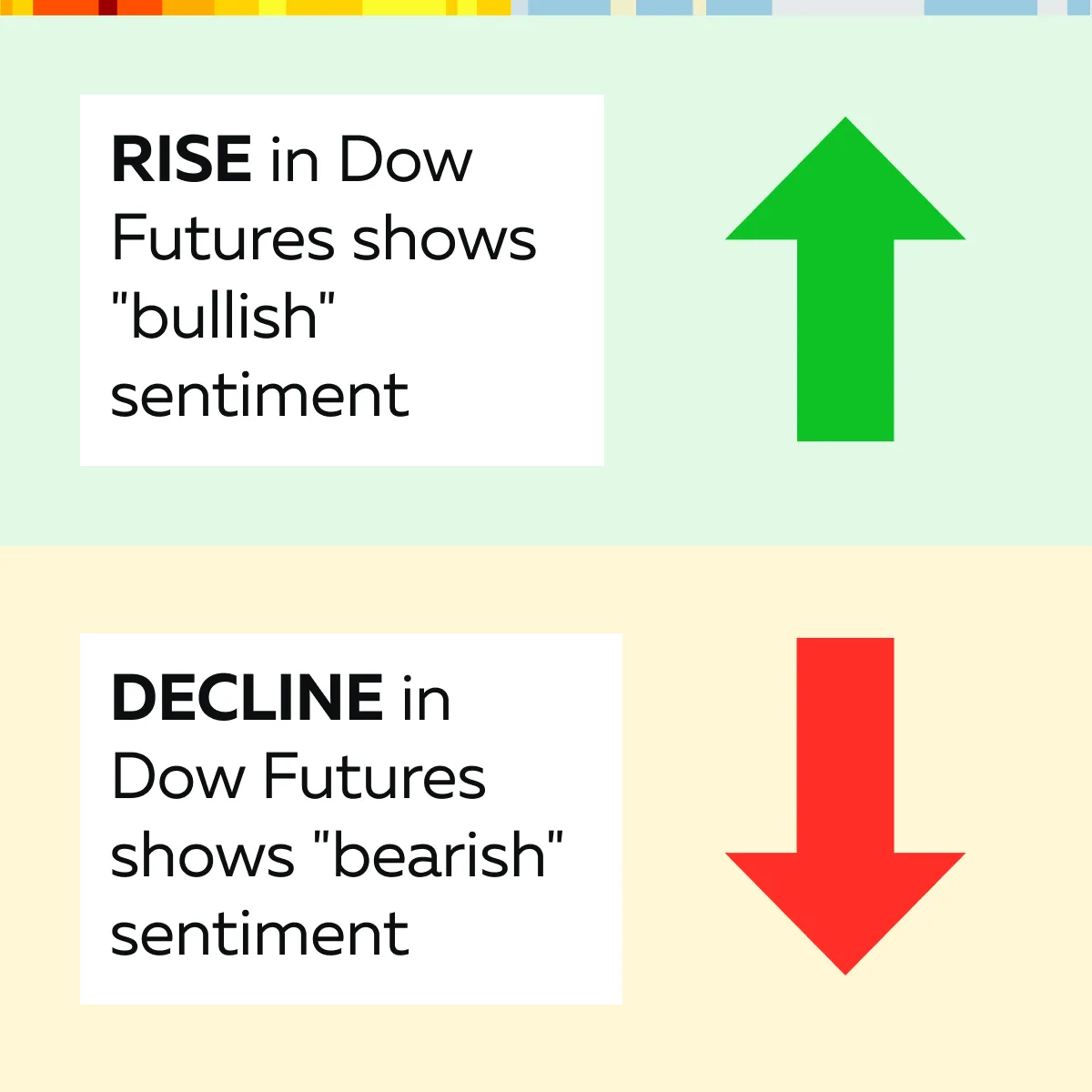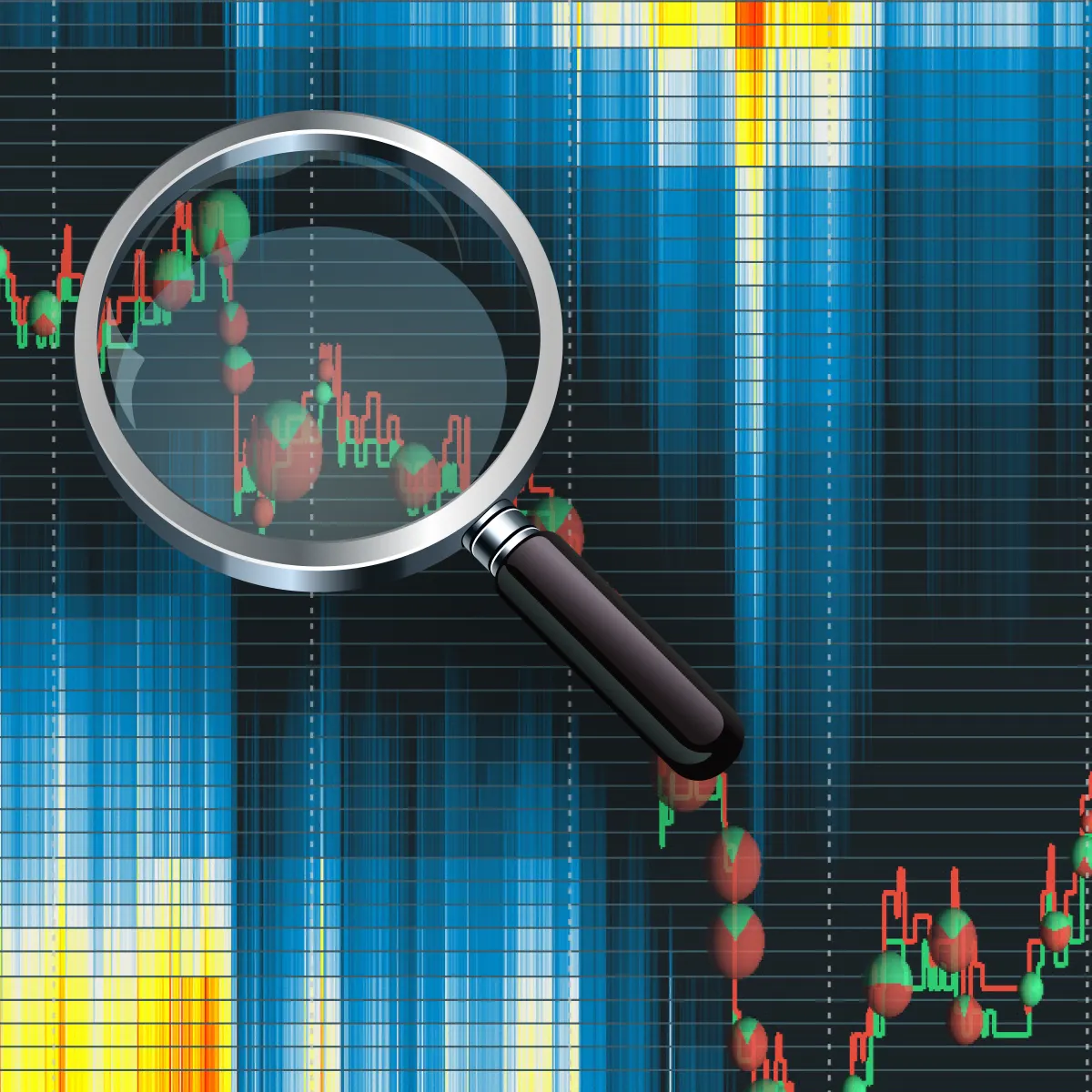

December Trading
Deals Are Live!
Save on Global+, data access,
and add-ons.
See All December Deals

Black Friday
Nov 28-Dec 31
15 days : 23 hours
50% OFF Global+ Quarterly
+ 50% OFF Data (3 months)

Cyber Monday
Dec 1 - Dec 31
15 days : 23 hours
60% OFF Global+ Monthly
+ Data (1 month)

Add-on Deals
Dec 1 - Dec 31
15 days : 23 hours
50% OFF
Add-ons

New Year Sale
Dec 26 - Jan 1
9 days : 23 hours
30% OFF Global+ Lifetime
*Data not included
Education
October 22, 2024
SHARE
How Dow Futures Shape Market Predictions: What Traders Need to Know
Those blue chips can reveal the US economy. The Dow Jones Industrial Average (DJIA) is a US stock market index that tracks 30 blue-chip companies. But, what’s in it for you? For that, learn one more concept of Dow Futures that are directly linked to the DJIA. If Dow Futures rises, it suggests optimism about the DJIA’s future performance. However, if Dow Futures fall, it signals market decline. In a way, these futures predict DJIA movements before the market opens. By smartly using Dow Futures, you can speculate on future market movements and even predict trends. Yes, through them you can get profit-making opportunities in both rising and falling markets.
Want to understand it in detail?
In this article, you’ll learn what Dow Futures are, how they work, and why they are important for short-term trading and long-term portfolio protection. We’ll explain how traders use Dow Futures to speculate on market direction, and how these futures often provide clues about where the stock market is headed, especially during pre-market hours. You’ll also study popular trading strategies, from day trading to swing trading, and learn how Dow Futures can be used to hedge against market downturns. Lastly, we will show you how to enhance your Dow Futures trading by visualizing buying and selling pressure using Bookmap. Let’s begin.
What Are Dow Futures?
Dow Futures are financial contracts. They allow traders to speculate on the future value of the Dow Jones Industrial Average (DJIA). For the unaware, it is a key stock market index representing 30 major U.S. companies. These futures are linked to the DJIA. This means their value fluctuates in tandem with the index. See the graphic below to understand why most traders use Dow Futures:

Next, be aware that Dow Futures are traded on exchanges like the CME. They have standardized contract sizes which represent a fixed value of the DJIA. Each contract has an expiration date, after which it is settled. Moreover, by trading Dow Futures, you can leverage and control a larger position with a smaller initial investment.
Now, to better understand the practical usage of Dow Futures, let’s study how it is used for hedging purposes:
-
- Say a trader holds a $1,000,000 portfolio of Dow Jones stocks.
- The Dow Jones is trading at 35,000.
- The trader expects the market to fall due to economic uncertainty.
- They want to protect their portfolio from potential losses.
- To hedge, the trader sells 5 Dow Futures contracts (assuming each contract covers $200,000 of the Dow Jones index).
- In this way, they sold futures contracts worth $1,000,000.
Now, there could be two possible scenarios:
| Scenario I: The Market Falls | Scenario II: The Market Rises |
|
|
Learn how to use Bookmap to analyze Dow Futures and gain an edge in your trading. Sign up today!
Key Market Indicators Influencing Dow Futures
Dow Futures are sensitive to various market factors, which significantly impact their value. These factors also influence investor sentiment and their decisions to buy or sell Dow Futures. See the graphic below to check some key factors that influence Dow Futures:

Now, let’s understand three major market indicators in detail:
Factor I: Economic Indicators
Economic data directly affects Dow Futures as it plays an important role in shaping market sentiment. Some common examples of such data are:
- Employment figures,
- GDP reports, and
- Inflation data.
For more clarity, let’s study an example:
Say a stronger-than-expected jobs report was released. This signals economic growth and boosts investor confidence. As a result, there is a surge in Dow Futures as traders anticipate increased corporate profits and economic expansion. On the other hand, weak economic data could trigger a decline in futures, as such a report reflects fears of an economic slowdown.
Factor II: Interest Rates and Fed Policy
The Federal Reserve’s policy decisions, particularly regarding interest rates, have a significant impact on Dow Futures. Let’s see how:
| When the Fed hints at raising interest rates | When the Fed signals a rate cut or maintains a low-interest environment |
|
|
Factor III: Global Market Movements
Global events, such as geopolitical tensions or economic developments in major economies, also influence Dow Futures. For example, say there is news of a trade deal between major economies like the U.S. and China. This could lead to a surge in Dow Futures due to the positive impact on:
- Global trade,
- Business confidence, and
- Economic growth prospects.
On the other hand, geopolitical tensions or negative economic news from other countries cause Dow Futures to fall.
How Do Dow Futures Predict Market Trends?
Dow Futures are often used as a leading indicator for the broader stock market. They offer clues about where the market might open or move during the trading day. Most traders and investors closely monitor Dow Futures during pre-market hours. By doing so, they can:
- Spot overall market sentiment,
- Identify trading opportunities, and
- Adjust their positions before the official market opens.
To better understand the relevance of Dow Futures, see the graphic below:

How is Dow Futures Correlated with the Dow Jones Industrial Average (DJIA)?
It is worth mentioning that there is a strong correlation between Dow Futures and the DJIA. The former often moves in tandem with the index. For example, during major economic announcements (like interest rate changes or GDP data) or during earnings seasons, Dow Futures often react before the market opens. These shifts indicate how traders believe the market will perform once it opens. Let’s check the two possible situations:
| Situation I: Dow Futures Rise | Situation II: Dow Futures Fall |
|
|
A historical example of this even occurred on March 9, 2020, when Dow Futures plunged by over 1,000 points before the market opened. This move accurately predicted a similar decline in the DJIA.
Enhance your market predictions by understanding Dow Futures—start trading smarter with Bookmap. Get started here!
Strategies for Trading Dow Futures
There are various strategies for trading Dow Futures. Their choice largely depends on market conditions and investor’s trading styles. For example, you can focus on short-term opportunities with day trading and try to capture medium-term trends with swing trading. Alternatively, you can use futures for hedging.
For a greater understanding, let’s study three most popular strategies in detail:
Strategy I: Day Trading Strategies
Day trading Dow Futures strategy capitalizes on short-term price movements within a single trading day. Here, traders focus on intraday volatility, which is often triggered by economic data releases, such as employment reports or Fed announcements.
For example,
- Say a day trader decides to quickly buy or sell Dow Futures following a major economic announcement, like a surprise interest rate cut.
- By monitoring price action and using tight stop-loss orders, the trader profits from rapid price swings.
- They exit the position by the day’s end to avoid overnight risk.
Strategy II: Swing Trading Strategies
Swing trading involves holding Dow Futures positions over several days or weeks. The goal of this strategy is to get hold of “larger market moves.” It is pertinent to note that swing trading strategy relies on technical analysis and market indicators to identify potential trends or reversals.
For example,
- Say a swing trader identifies a bullish trend in Dow Futures through moving averages and RSI indicators.
- They decide to hold a long position through minor market corrections.
- They are hoping to capitalize on a broader rally.
- Similarly, in a bearish market, they hold short positions to profit from a prolonged downturn.
- Also, they adjust positions based on emerging market signals.
Strategy III: Hedging Strategies
Dow Futures are also used as a powerful tool for hedging against the expected market downturns. They are especially effective for investors with a portfolio heavily weighted in DJIA stocks. By taking an opposite position in Dow Futures, investors can reduce the risk of losses from a market decline.
For example,
- Say an investor holds long positions in several blue-chip stocks within the DJIA.
- They expect a market correction due to economic uncertainty.
- To hedge their portfolio, they short Dow Futures.
- If the market declines as anticipated, the losses in their stock portfolio would be offset by gains from the short futures position.
- Ultimately, this reduces the overall portfolio risk.
Analyzing Dow Futures with Bookmap
Bookmap is an advanced market analysis tool, offering modern features like the heatmap to help traders visualize market depth. It displays the concentration of buy and sell orders at various price levels in Dow Futures. The heatmap reveals key levels of support and resistance, where large resting orders indicate significant interest in buying or selling.
For example,
- Say a trader uses our heatmap.
- They identify a large cluster of sell orders above the current market price.
- This suggests a potential resistance level.
- On the other hand, a concentration of buy orders below the market could indicate support.
- In this way, traders using Bookmap can anticipate likely price barriers or breakout points.
Apart from heatmaps, Bookmap also offers several other features like:
A) Order Flow Analysis
When it comes to Dow Futures trading, real-time order flow analysis is important because it provides insights into the ongoing buying and selling pressure at different price levels. As a Bookmap user, you can easily monitor order flow by:
- Visualizing executed trades
and
- Tracking volume changes.
This helps reveal the intentions of market participants. For example, assume that a trader uses Bookmap to detect an influx of aggressive buying at a particular level. This indicates strong upward momentum. Whereas a surge in selling pressure shows an impending decline. By analyzing this real-time data on Bookmap, traders can make more informed decisions on entering or exiting positions.
Now, let’s study another example to have a better understanding of how Bookmap’s order flow data can be used for smarter Dow trading:
- Say a trader is using Bookmap to analyze Dow Futures.
- The Dow Futures price is currently trading at 35,000.
- On Bookmap, the order flow data shows a large number of buy orders at 35,000.
- This causes the price to rise to 35,050.
- A heatmap reveals significant resting sell orders at 35,100.
- But these orders are being absorbed quickly by aggressive buyers.
- Now, this suggests strong demand.
- Recognizing that buyers are dominating the market and absorbing sell orders, the trader expects the price to keep rising.
- They enter a long position at 35,050.
- The trader is expecting the price to break through 35,100 and continue moving upwards.
- Ultimately, the price rises as expected, say to 35,200.
- In such a situation, the trader can profit from this upward momentum.
B) Integrating Footprint Charts
Our Footprint charts provide a detailed view of the exact volume of buy and sell orders at each price level in Dow Futures. This enhances the trader’s understanding of market sentiment.
For example, when a potential breakout is identified, the trader uses the Footprint chart to analyze the volume distribution. If the chart shows a significant increase in buy volume and minimal selling resistance during the breakout, it confirms strong bullish sentiment.
Conclusion
Dow Futures provides insights into the future movements of the Dow Jones Industrial Average (DJIA). Traders use Dow Futures not only as a tool for speculation but also as an effective way to hedge portfolios. They are highly sensitive to various economic factors like employment data, Fed interest rate decisions, and global market events. This makes them a key indicator of market sentiment.
By monitoring Dow Futures, traders can predict market trends and make informed decisions even before the official market opens. Our advanced market analysis tool Bookmap, allows traders to analyze order flow and identify key price levels. It is also widely used to determine breakout or resistance points.
Furthermore, Bookmap offers features such as “heatmaps” and “footprint charts.” They allow traders to visualize market depth and buying or selling pressure in real-time. By using the information so gained, traders can fine-tune their entry and exit strategies. Do you wish to improve your Dow Trading skillset? Check our subscription packages today!
